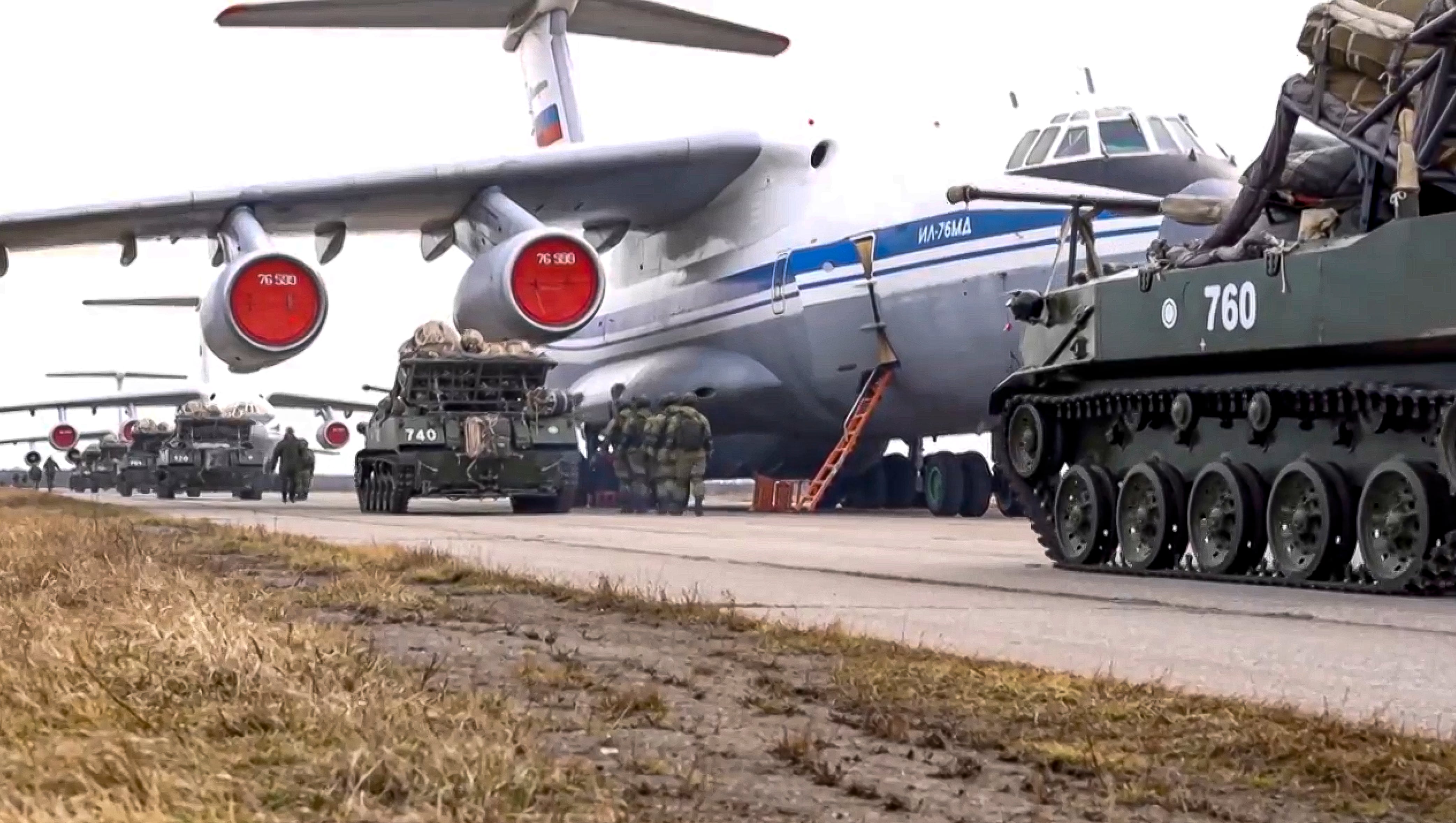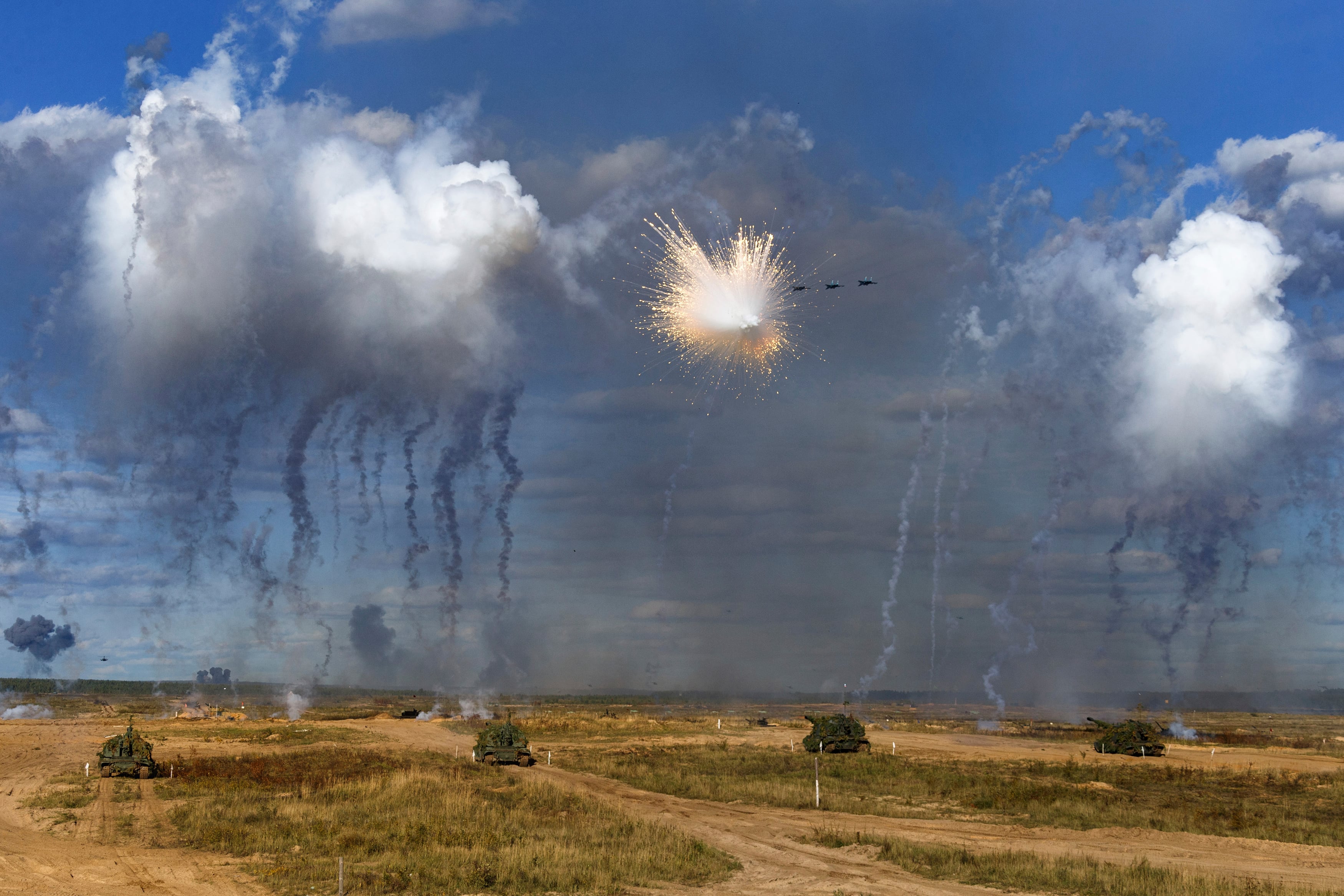With 120,000 Russian troops now arrayed along the Ukrainian border, officials in Washington and Kyiv are anxiously signaling that a nearly seven-year-old frozen conflict could heat up once again.
The good news is that a task force comprised of more than 100 American troops from the Florida National Guard in far western Ukraine are outside Moscow’s military reach. The bad news is that this could be the start of a “permanently” militarized border between Russia and Ukraine, and an invasion could be triggered if Ukraine attains advanced weapons.
“There is a conflict that’s already happening,” retired Lt. Gen. Ben Hodges, former commander of U.S.Army Europe and now the Pershing Chair in Strategic Studies Center for European Policy Analysis, told Military Times. “So, what we’re talking about now, is a possible expansion of the ongoing kinetic operations.”
Until now, those kinetic operations have primarily been contained to exchanges of artillery and sniper fire between the Ukrainian Army and Russian-backed irregulars. With the arrival of large numbers of conventional Russian military units, the calculus has changed.
Worries have grown to include a Russian offensive into Ukraine to seize part or all of the country.
However, experts who spoke with Military Times say that Russia does not intend to invade Ukraine, at least in the near term. Further, Russia does not have the military capacity or the will to occupy all of Ukraine. Instead, the growing Russian presence on the border with Ukraine is a response by Moscow to a fractured and increasingly hostile relationship with Kyiv.
“[Russia] is upset because Ukraine is now [a] hostile country, and Ukrainian leaders have said, ‘We want to retake the Donbas and Crimea, and we’ll do it by force,’” Robert Lee, a former Marine Corps infantry officer, and current War Studies Department Ph.D. Candidate at Kings College in London told Military Times.
While a Defense Department spokesman declined to comment on the number of U.S. troops in Ukraine, previous deployments to train and mentor Ukrainian cadre at Combat Training Center-Yavoriv have tallied up to about 165 troops. The training center is also far closer to Poland and Kiev.

According to Lee, a core intent of Russia’s military build-up on its border with Ukraine is to maintain a military advantage in the region. Russia is putting in place the military hardware to destroy any potential challenge to that advantage.
“From Russia’s perspective, this is a medium to long term threat,” Lee said. “[Russia] now has a hostile county on their border, and [Russia] is always going to need to have forces based there to defend against them.”
Currently, the Russians can strike targets anywhere inside of Ukraine from a variety of “stand-off” platforms, said Lee. Further, the stated intention of Ukraine, spelled out in “Strategy for the Liberation and Reintegration of Crimea” adopted by the Ukrainian cabinet this September, has made it necessary, in the eyes of Moscow, for Russia to militarize the border with its western neighbor permanently.
While the build-up of the Russian military on the border does not signal an imminent invasion of Ukraine by Moscow, it also does not mean that war is outside the realm of possibility. In the opinion of Lee, such an invasion would be triggered by a crossing of Putin’s “red-line,” such as U.S. sales or deliveries of long-range missiles or artillery to Ukraine. Such weapons could also be used in offensive operations against Russian territory.
During the administration of President Trump, the U.S. began deliveries of Javelin anti-tank missile systems. While the Javelin is an adequate means for infantry to counter armored vehicles, they aren’t enough to stop a potential Russian offensive, said Lee.
“[Javelins] don’t significantly alter the balance of power on the ground,” Lee said, noting the greater context of the Ukrainian and Russian military capabilities.

Although the presence of Javelins wouldn’t significantly alter the course of a Russian invasion, providing the Ukrainians with more sophisticated weaponry would help close a capability gap between the two nations, according to Lee. The tough part? Any effort to close that gap would ensure Russian military action against Ukraine.
“The spring was a warning [by Russia]. This time is a second warning. I don’t think there will be a third warning,” Lee said before adding that Russia has added the force structure in the region to strike Ukraine on “short notice.”
“I would expect if they decide to do this, it would be very fast and be very lethal,” Lee said.
Others who spoke with Military Times agreed that a Russian attack on Ukraine would be bloody for both parties but limited in nature, with the objective of Moscow being to secure the eastern provinces of Ukraine, which have been mired in conflict since 2014.
“I would not imagine them emerging from the Donbas and heading toward Kharkiv or Kyiv, and they don’t need to,” Hodges told Military Times. “They already control most of the Donbas, and keeping in mind the strategic objective is to present Ukraine to the West as a failed state.”
Further, according to Hodges, Russia wants to send the message to Europe and the West that it’s too late to integrate Ukraine into NATO.
“They don’t need to control all of Ukraine,” Hodges continued. “And to be honest, I don’t think they could. I don’t think they have the logistics, and this is not the same Ukrainian armed force we saw in 2014.”
According to Phillip Karber, president of the Potomac Foundation, since 2014, Ukraine has built the “strongest ground force in Europe” outside of Russia.
“They’ve gone from 12 to 66 battalion tactical groups,” Karber told Military Times. “Plus, they have another 100,000 in the reserves. A good portion of the reserves are combat trained, as is about half of the active army.”
Karber added that the Ukrainians could inflict many casualties on advancing Russians, which he said would not be popular with the Russian people.

As it pertains to potential U.S. involvement in a conflict in Ukraine, Hodges believes that this is an outcome neither Washington nor Moscow wants. He doesn’t think the Biden administration is “seriously considering” a military response and the Kremlin wants to avoid provoking the U.S. into entering the conflict.
“It would be very unusual circumstances,” Hodges added, “if the U.S. were to respond kinetically to a Russian expansion of the conflict in Ukraine.”
Instead, Hodges told Military Times that there are several actions that neither involve weapons systems nor combat that the Biden administration can take to assist the Ukrainians.
“I think that the U.S. should continue and perhaps increase whatever intelligence we’re providing to Kyiv,” Hodges said. “That to me seems entirely appropriate.”
Hodges noted that Washington should continue to provide the current level of military assistance and aid to Kiev. But instead of upping the ante with more advanced weaponry, Washington should come up with a definitive strategy for the region, rather than simply responding to each crises in a piecemeal way.
“We don’t have a strategy for the region, and Ukraine matters strategically because of where it sits on the map,” Hodges said. “But when you’re talking strategy, it can’t be about sentiment. It’s got to be about geography and interest. And that’s missing right now.”
James R. Webb is a rapid response reporter for Military Times. He served as a US Marine infantryman in Iraq. Additionally, he has worked as a Legislative Assistant in the US Senate and as an embedded photographer in Afghanistan.




